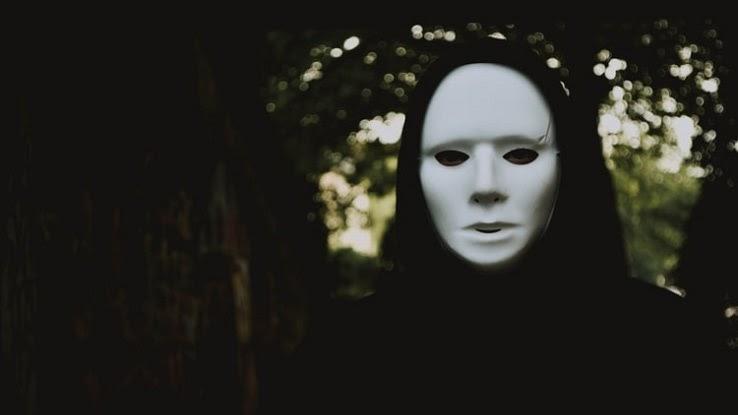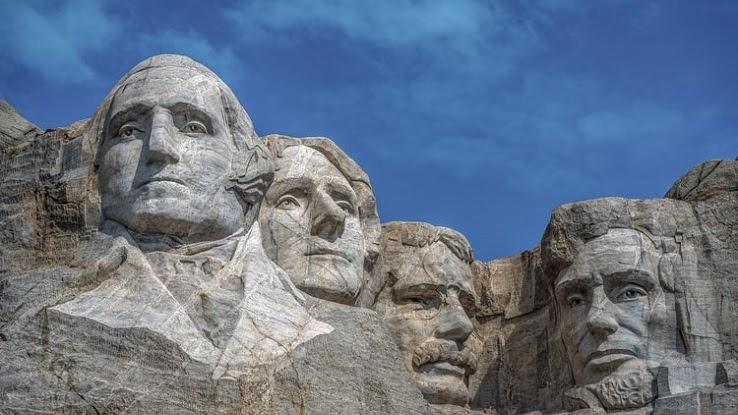Uncovering History’s Biggest Secrets

Without a way to go back in time to find the truth, most historical secrets will remain safely buried, but historians have certainly worked hard to solve some of history’s greatest mysteries. In some cases, pieces of the puzzle have been put together thousands of years to finally reveal the truth.
If you can’t rest without knowing the identity of the man in the iron mask or where in the world they buried Genghis Khan, then get ready to learn the answers to these questions and more. As fate would have it, some secrets didn’t stay buried after all.
Golden Buddha
In Bangkok, Thailand, an enormously heavy Buddha statue known as the Phra Phuttha Maha Suwan Patimakon stood outside Wat Traimit, towering 9 feet tall and covered in plaster. Bangkok enjoyed and revered this sculpture for 600 years until it was moved to a new location.

During the moving process in 1955, the statue was dropped accidentally, and the plaster exterior broke. Shocked witnesses realized that the inside of the Buddha was made entirely of solid gold. For centuries, no one knew the rather dull statue they were admiring was worth $250 million.
Mysterious Byzantine Weapon
In the Byzantine Empire, Greek Fire was a mysterious type of fuel used for a flame-throwing weapon that was rumored to be fueled by water, yet was curiously able to burn on water. (Did you get all that?) The weapon was used from around 670 to 1450, and the fuel resembled a flammable jelly made of a mystery substance that was likely calcium carbonate.

The Byzantine warriors saturated enemy ships with the flammable substance and sealed it inside mine-like grenades that were launched at their opposition. The only known way to put the flames out was to extinguish them with vinegar sand, as water was completely ineffective.
The Man in the Iron Mask
During the monarchy in France in the 1680s, King Louis XIV imprisoned a man for life and locked him in an iron mask until his death, concealing his identity. Historians have speculated for centuries about who the man was, with some theories focusing on the king’s hidden twin brother or a cousin who was plotting a revolt.

The debate also rages on for what the mysterious man in the iron mask did to deserve such a horrifying punishment. Some researchers believe the man was a subordinate, like a valet, who was punished for angering the king. The mystery persists today.
King Tut’s Hidden Tomb
For almost 3,000 years, the Pharaoh King Tut’s tomb remained untouched by human hands, which was unusual, because Egyptian tombs were commonly plundered by disreputable fortune hunters. Researchers believe the reason for this is that King Tut died suddenly early in his life, and the tomb where he was buried wasn’t meant for a pharaoh.

In 1922, an archaeologist named Howard Carter discovered the hidden burial chamber in the renowned Valley of the Kings in Egypt. Until the surprising finding, it was thought that every Egyptian pharaoh’s tomb had already been revealed.
Rome’s Recipe for Concrete
Rome is famous for its fantastic architecture, and it’s considered almost miraculous that builders constructed the signature domes found on many buildings about 2,000 years ago. Researchers didn’t understand at first how the Romans accomplished this. They eventually determined they integrated volcanic ash and saltwater into their concrete, but the exact recipe is still unknown.

The Roman Coliseum and the Pantheon remain wondrous and impressive monuments for the world to behold. Who knows? They may still be standing in another 2,000 years — just as the exact formula for the magical concrete may still be unknown.
President Roosevelt’s Wheelchair
President Roosevelt contracted polio and lost the use of his legs at the age of 39, but he didn’t want the American public to know about his disability. He even had a tunnel built from Grand Central Terminal to the Waldorf Astoria to allow him to leave the White House without the public viewing his wheelchair.

The Secret Service was in on the secret, of course, and they swiftly seized the cameras of anyone in the White House photography corps who took a picture of the wheelchair. They even tore the film out of cameras and smashed their plates, much to the dismay of the photographers.
Egyptian Hieroglyphics
The Rosetta Stone helped researchers decode some hieroglyphic symbols in the 1820s. The stone proved the symbols represented sounds or whole words and were not an alphabet, as previously believed. However, not all the symbols were deciphered by the tablet, and some remain a mystery.

For centuries before the discovery, Egyptian hieroglyphics were considered an encrypted language that was impossible to understand. Now, we know that the mysterious communication represented a tax system and other societal necessities. Unfortunately, the complete translation of the ancient language may elude us forever.
George Washington’s Spies
Agent 711, otherwise known as U.S. President George Washington, was the leader of the Culper Spy Ring, a network of spies tasked with spying on the British during the Revolutionary War. The spy ring was founded by a man named Benjamin Tallmadge, and it provided critical information on covert plans of the British.

The information provided by the Culper Spy Ring proved to be an invaluable resource to George Washington and his troops, and some maintain it is why America won the war. This well-kept secret was hidden from public knowledge for more than 150 years.
Roman Birth Control
The Roman medical community had a secret recipe for herbal birth control for its citizens — the herb silphium. If you’ve never heard of silphium, it might be because it became so valuable to the Romans that they used it excessively, and now the plant is extinct.

The silphium herb is believed to have been similar to fennel, and it was native to North Africa. The herb was prevalent at the time and coveted by the Romans for many purposes. Historians still debate how effective it was at preventing pregnancy, and it looks like the world will never know unless a hidden meadow of silphium is found.
China’s Silky Secret
Silk manufactured and distributed from China — often sold on the Silk Road — used to be known as “white gold,” and the western world longed to learn the secret of making this product. China also had a monopoly on porcelain until Europeans finally figured out how to create it in the 1500s.

Korea got in on the lucrative silk trade in 200 BCE, and knowledge of the process eventually made its way to Europe. By the 1700s, Europeans were mass-producing beautiful porcelain, and by 1100 CE, Italy had started to produce its own silk. Silk and porcelain remain prized possessions regarded as luxury items to this day.
The Manhattan Project
The Manhattan Project was a secret project focused on creating a massively destructive weapon capable of destroying Hitler’s Nazi Germany. The U.S. correctly assumed that Hitler was attempting to create the same type of weapon and wanted to be the first to accomplish it.

It’s nothing short of a miracle that the creation of the atomic bomb was kept a secret. It cost more than $2 billion and required about 130,000 people to work on the project. The U.S. managed to pull off the top-secret mission, even though the building of the bomb took place across 30 different sites.
Britain’s Fake Naval Officer
Ian Fleming, the creator of James Bond, devised a secret mission called Operation Mincemeat to fool the German military into thinking the British were going to invade Greece. The British SOE took the body of a dead homeless man and made it appear as if he was a naval officer carrying plans for the make-believe invasion.

The fake officer, complete with a made-up ID, washed up on the shore in Spain and was discovered by the Germans. In truth, the Western Allies were really planning to invade Sicily on July 9, 1943, a mission that was dubbed Operation Husky.
Greek and Roman Underground Cults
Before Christianity took over, there were some secret Greco-Roman cults that prevailed for almost 2,000 years. Unfortunately, they didn’t document their activities or practices, so very little is known about these mysterious cults that are believed to have practiced underground in ancient times.

Roman Emperor Theodosius made polytheism illegal in 391 CE and destroyed the temples, effectively eliminating the cults. Some scholars believe the cults practiced a kind of proto-Christianity that focused on the afterlife. Historians agree that they practiced magical rites and initiation rituals and used sacred images.
Jack the Ripper
In London in 1888, a person known as Jack the Ripper mutilated and murdered at least five women. He reportedly sent letters to the police, taunting them and daring them to find him and prosecute him. Scholars disagree on whether the letters were from the actual murderer.

To this day, Jack the Ripper — suggested to be a woman named Lizzie Williams in a recent book — has never been identified. It’s unlikely the world will ever know the true identity of the person who killed those women.
The Whereabouts of Jimmy Hoffa
On July 30, 1975, the Teamster known as Jimmy Hoffa disappeared from Oakland County, Michigan. Known for his connection to organized crime, Jimmy Hoffa is presumed to have died long ago, but police and forensic anthropologists have yet to identify his killer or discover his body.

Many speculated that Hoffa’s body was buried under Giants Stadium in New Jersey, but this theory has been proven wrong. Also, a hitman named Richard “The Iceman” Kuklinski claimed that he murdered Hoffa and discarded his body in a scrap yard, but the police doubt his story is true.
Cleopatra’s Tomb
The ancient writer Plutarch (A.D. 45-120) recorded that Cleopatra VII and her lover Mark Antony were buried together in a “lofty and beautiful” monument filled with gold, silver, emeralds and other treasures in 30 B.C. The exact location of this burial chamber, however, remains a mystery.

As recently as 2010, excavations took place near Alexandria — now called Taposiris Magna — in an attempt to locate Cleopatra and her lover, but the digs were unsuccessful. However, archaeologists did uncover many other significant findings during the digs. The excavations were conducted by Egypt’s former antiquities minister, Zahi Hawass.
JFK’s Murderer(s)
History says that President John F. Kennedy was tragically shot and killed on November 22, 1963, in Dallas by Lee Harvey Oswald, but many historians speculate that he didn’t act alone. Two days later, Oswald was then shot and killed by a nightclub owner named Jack Ruby. Ruby subsequently died of cancer four years later.

When asked why Ruby killed Oswald, he replied that his motive was to spare Jacqueline Kennedy “the discomfiture of [Oswald] coming back to trial.” There are many conspiracy theories about this murder mystery, and the “truth” is unlikely to be as simple as the official record indicates.
Oak Island Money
Oak Island, located off the coast of Nova Scotia, Canada, has been rumored to be home to large amounts of buried treasure for more than two centuries now. In fact, many expeditions have been made to find the hidden booty, all to no avail. The notorious pirate Captain William Kidd (1645-1701) reportedly left his treasure there before he was caught and hanged in England.

The History Channel even has a current television show called The Curse of Oak Island that is based on treasure hunters attempting to locate the pirate’s fortune. Many hopeful people have collectively spent millions of dollars traveling and searching for this elusive treasure.
The Copper Scroll Treasure
In 1952, a copper scroll was discovered by archaeologists at the Qumran archaeologist site in a cave, accompanied by other Dead Sea Scrolls. The etchings engraved into the copper scroll recorded an enormous amount of gold and silver treasure, which some researchers claim is too large to exist.

At the time the scroll was written (almost 2,000 years ago), the Roman Empire had control of the Qumran region, and the scroll was thought to be hidden to protect it from Roman forces. Numerous revolts took place against Roman rule around this time, which adds to the mystery.
The Ark of the Covenant
King Nebuchadnezzar II conquered Jerusalem with his Babylonian army in 587 B.C., completely destroying the First Temple in the process. The First Temple was used to worship God by the Jewish people and contained the Ark of the Covenant, which carried the tablets with the 10 Commandments written on them.

What became of the Ark remains a mystery. Some speculate that it was carried back to Babylon, hidden or demolished. Many opposing theories exist related to the whereabouts of the Ark. Some say it will remain hidden until a Messiah arrives on Earth.
The Hanging Gardens of Babylon
Philo of Byzantium wrote around 250 B.C. that in the ancient city of Babylon (now Iraq) there were “plants cultivated at a height above ground level, and the roots of the trees are embedded in an upper terrace rather than the earth.” The hanging gardens were often referred to as a “wonder of the world.”

Archaeologists now disagree about whether the gardens actually existed. Recently, an Oxford University researcher named Stephanie Dalley speculated that the gardens may have been located at the Assyrian city of Nineveh and not Babylon at all.
Atlantis
The Greek philosopher Plato wrote a story in the fourth century B.C. about a land called Atlantis, located in the Atlantic Ocean. He wrote that in prehistoric times, Atlantis had conquered most of Europe and Africa. Afterward, the Athenians struck back, and Atlantis lost the battle and subsequently disappeared into the ocean.

Although this story isn’t believed to be literally true, scholars speculate that it may be based on actual events. One theory is that the Minoan people living on the island of Crete inspired the story when a volcano called Thera erupted in Greece, causing excessive damage.
Jesus, the Man
Because the earliest known gospels date to the second century, well after the death of Jesus Christ, biblical scholars have many questions. For example, “When were the gospels written?” and “What was Jesus like in real life?” still plague the curious.

Recently, a scientific discovery of a first-century house is thought to be the house that Jesus grew up in, but the accuracy of this supposition isn’t known. Many archaeological investigations of Nazareth have taken place with few results, so the answers to these questions are likely to remain a mystery.
The Princes in the Tower
King Edward IV died in 1483 and left two sons — the new King Edward V of England and Richard of Shrewsbury, Duke of York. The boys resided in the Tower of London to await the proclamation and coronation of the new presumptive king, as was the tradition.

However, the boys’ uncle — Lord Protector Richard, Duke of Gloucester — was appointed to oversee the boys. Instead, he proclaimed himself king on the grounds that the boys were a product of a bigamous marriage. Richard was crowned King of England, and both boys suddenly disappeared shortly after his takeover. They were always presumed murdered, but no proof has ever been found.
The Kentucky Fried Chicken Recipe
Harland Sanders perfected the KFC Original Recipe by July of 1940, after transforming his gas station in Corbin, Kentucky, into a restaurant/motel. His recipe utilizes pressure cooking as well as 11 herbs and spices. Worried that others would steal his creation, he created a franchise called “Kentucky Fried Chicken” in the 1950s with possible theft in mind.

KFC demanded a rigid secrecy policy about the recipe and divided the production of the chicken between several manufacturers. The company even decided against patenting the formula because they didn’t want to disclose their ingredients. Today, the recipe is sealed inside a high-security safe in Louisville.
Tutankhamun’s Death
Born in 1341 BCE, Egyptian Pharaoh Tutankhamun belonged to the 18th dynasty and ruled during the New Kingdom (1132-1323). Not much information is known about his reign. It’s also unclear whether his death was purposeful, accidental or due to combined congenital defects or an infection.

It’s presumed that the 18-year-old ruler died abruptly, because microbiologist Ralph Mitchell claimed the king was buried before the walls of his tomb were dry. Some surmise that Tut was murdered, but others insist that he was afflicted with malaria and Kohler disease, which may have caused his demise.
The Voynich Manuscript
Thought by some to be the world’s most mysterious book, the Voynich manuscript is an incomprehensible 15th-century work written in an indecipherable language. Many researchers have pored over the exquisite writings and admired the illustrations of nudes and plants — but failed to crack the code.

The manuscript’s name was inspired by the man who purchased it in 1912, Wilfrid Voynich, a Polish-Samogitian. The text in the book is written from left to right, and around 240 pages are missing altogether. The Voynich manuscript now resides in Yale University’s Beinecke Rare Book and Manuscript Library.
Mary Celeste
On December 5, 1872, the merchant ship Mary Celeste was discovered drifting along in the middle of the Atlantic Ocean — off the Azores Islands — with no crew. Curiously, the ship’s lifeboats had been removed, but she seemed to be in absolutely impeccable condition. Obviously, people found the mystery to be extremely strange and disturbing.

None of the crew of the Mary Celeste were ever seen again. Some of the theories about their fate included death from a mutiny, deep-sea creatures or even pirates. The ship had a cargo full of denatured alcohol, and the occupants may have feared an explosion that didn’t occur.
Roanoke Island
Roanoke Island is located off the coast of North Carolina and was populated in 1587 by English settlers led by John White. White’s granddaughter, Virginia Dare, was the first English child born in the New World.

The settlers struggled with hunger and diseases. By 1950, the entire island was abandoned, and the word “Croatoan” was carved into a post. No trace of the colonists was ever found. It has been speculated that they fled to nearby islands and became part of the Native American tribes. Other researchers believe the colonists were actually massacred.
Tomb of Genghis Khan
Although many have searched for Genghis Khan’s tomb, no one has ever been able to locate it. Before he died, the Mongol ruler demanded a secret burial and commanded his troops to murder anyone who came anywhere near his funeral procession in order to protect its location.

Legend has it that Genghis Khan’s army rode 1,000 horses over his grave to obscure the site and ensure it remained hidden. Most Mongolians today don’t even want to find the ruler’s tomb because it would dishonor his request for secrecy.





